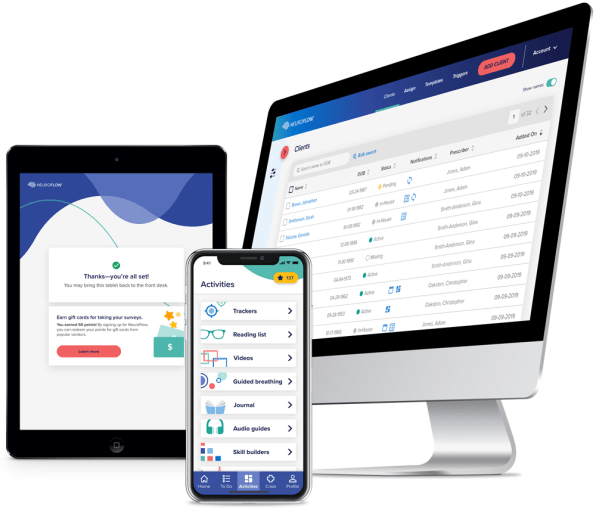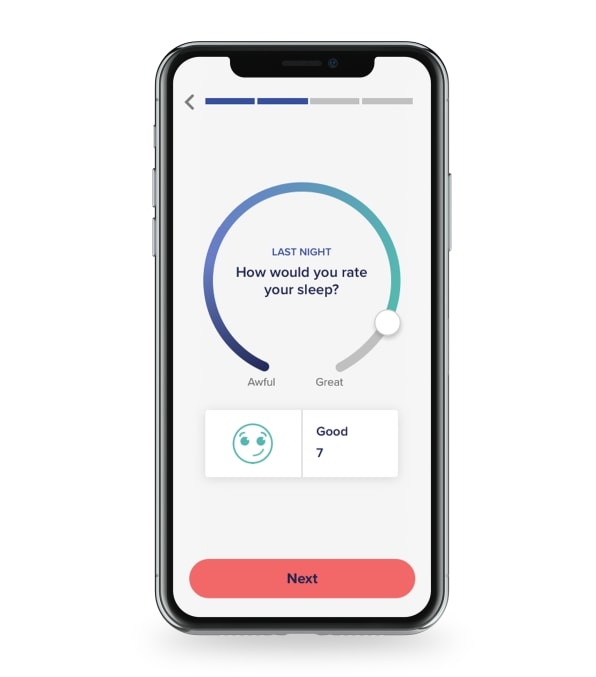The Air Force is using this mental health service to help with stress
The pandemic has been stressful for everyone, and that includes members of the military. In the past two years, suicide rates among active military service members have gone up 15%.
The military has long offered resilience training and access to therapy, but in 2020, the Air Force decided to take a different course of action. It began offering an innovative mental health platform called NeuroFlow to make care more accessible and to track how members were doing, so it could intervene if it seemed someone was a risk to themselves.
“It is known throughout the mental health community that the Department of Defense is experiencing a spike in suicides at an alarming rate,” says Durel Williams, a Master Sergeant in the U.S. Air Mobility Command, where he’s responsible for 2,800 security forces members. Of those, 600 have signed up for NeuroFlow, which tracks fitness, sleep, well-being, loneliness, depression, alcohol use, and anxiety. It also offers tools for emotional regulation, like guided meditation, journaling, and video and written resources.
All of this data becomes part of a user’s electronic health record. Artificial intelligence will then alert clinical staff about people who seem at risk. So far, 12 people have been flagged as at-risk, and in one instance a person was stopped from harming themselves.

Military members can sign up for the app anonymously. Their data is also shared only with healthcare providers, not management. If they are flagged for any reason, a care coordinator gives them a call to check in on them and see if they need more help.
Before this pilot with NeuroFlow, the military offered mental health care through traditional talk therapy and resilience training. Williams has been working as a resiliency trainer for the last 10 years, giving people tools to help them rebound from a difficult situation. However, accessing care is complicated. In order to see a therapist, service members are removed from duty, which is extremely stigmatizing. However, Williams says, it is a necessary step.
“Their duty is to secure and protect, and they are on an arming roster where every day they’re expected to be able to pick up their weapon and go to work. The process of going to speak to a therapist or care coordinator would remove their ability to arm and do their job,” he says.
There is more limited-scope counseling that service members can get through 24/7 hotlines. But until NeuroFlow, there was little in the middle to help military members develop the skills to cope with the very stressful lives they lead. So far, the technology has been deployed on 14 bases and among members of the Space Force. Nearly 90% of users have completed one or more activity.

Much of what military service members need help with is not directly combat-related. The majority of people who are grappling with suicide inside the military are quite young and, Williams says, much of their distress has to do with not having a solid mental health foundation. Inside and outside the military, many people have not developed a good set of tools for managing stress, particularly multiple sources of stress. In his experience, he says, some young people who join the military are running away from a bad situation. Maybe there’s physical abuse at home. Maybe their parents have a substance abuse problem. Whatever the situation, they may be coming into the military with preexisting stress and poor resources for managing it.
“So then you give them more responsibility, you give them more leeway, and sometimes between [ages] 18 to 25—which is where we really see it at—they just haven’t developed the ability to manage that load,” Williams says. He says another population in the military that reaches suicidal levels of distress includes older members who have suffered multiple traumas. Williams says this is often people who may not only have been involved in combat, but who are going through life-altering experiences like divorce, bankruptcy, or sexual assault.
NeuroFlow essentially helps service men and women build skills to better manage that stress and lets care coordinators know when someone needs additional resources, like therapy. It also reduces the need to pull someone out of work, which means less stigma around using the platform.
Most important, the tool has changed the way military leadership talks about mental health. Previously, Williams says, resilience training felt like another box to check. Service members weren’t internalizing it the way they needed to in order for the training to work. With an app, service members have an opportunity to practice coping skills daily if they want.
Ideally, Williams says, 15% of his members would use NeuroFlow to help develop the skills they need to feel in control and stable. He and others are spreading the word about it just by talking. “What we want to stay away from is mandating,” he says, noting that forcing service members to engage in trainings has not worked in the past. “We don’t want that to happen anymore.”
(33)



